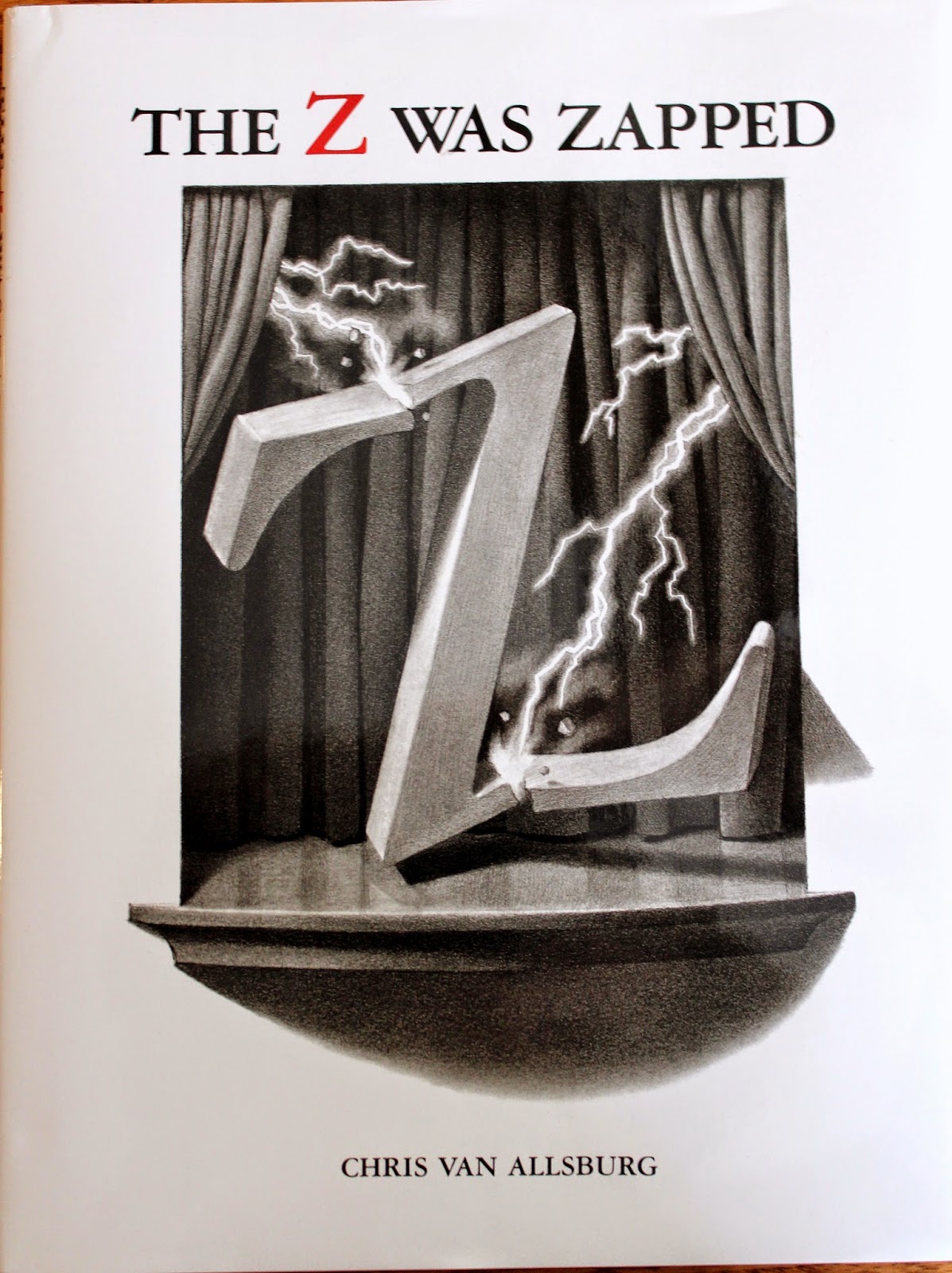Adverbs are difficult for students to identify. The -ly trick is helpful, but as with everything else in the English language, there are exceptions (ugly, friendly, family). Plus, the adverbs that do NOT end in -ly are the hard ones to recognize, in my opinion.
This anchor chart focuses on two main aspects of adverbs:
WHAT they modify (verbs, adjectives, and other adverbs)
and
HOW they modify (they tell us where, when, or how an action occurred, or they can explain the frequency or degree of something)
I think it's safe to say that most kids believe adverbs are boring and even confusing. I have an adverb activity that I have done the last three years when teaching about adverbs, and whenever I have done it, my students have really enjoyed it (both third graders and fifth graders)! In fact, this is such a tried-and-true lesson that I am linking it up to The Teacher Studio's
Loved That Lesson linky!
This adverb lesson is centered around the book,
The Z was Zapped by Chris Van Allsburg. I plan this lesson after adverbs have been introduced and we have spent some time identifying adverbs in sentences.
(Amazon affiliate link follows.)
 |
| The first page contains this picture only. Based on previous experiences with alphabet books (and perhaps a mild hint from me), students predict that a sentence with multiple A words will follow the picture, and they brainstorm A words based on the picture. (Once, students guessed that the matching sentence was "The A was attacked.") |
 |
Once you turn the page, the alliterative sentence is revealed.
The A was in an Avalanche.
(A is one of the few pages that does not contain an adverb.) |
Here are a few more of the pages:
Students love to guess what the accompanying sentence will be on each page, and after I read the sentence, we pause to determine whether there is an adverb in the sentence. When there
is an adverb, I have students also identify the word it modifies and how it modifies (whether it tells when, where, how, how much, or how often).
When we finish reading the book, I give each student a piece of drawing paper, and students create their own picture, following the pattern of the book. I tell students that their sentences must include an adverb. These are some of the pages my fifth grade students created a few years ago!
 |
| The G was gratefully glowing. |
 |
| The P was painfully pecked. |
 |
| The B was barely bitten. |
 |
| The S was slowly slithered on. |
 |
| The F fell fast. |
 |
| The W was whining wildly. |
When students finished their drawings, most of them volunteered to share their picture under the document camera and invite their classmates to guess the sentence that they wrote on the back of the paper.
If you are looking for additional activities, feel free to check out a couple from my store!
Thanks for stopping by!
~Deb























What a great post! I totally forgot about this book, and it is such a good one to model adverbs. When I go in to my room today, I'm going to look for it and keep it handy. The anchor chart you designed for adverbs is chock full of good examples and so easy to read. You really have a talent in this area!!!
ReplyDeleteAngela
Thank you, Angela! You are so sweet! You'll have to let me know if you find the book!
DeleteThanks so much for linking up...I love that book but have NEVER used it with my kids. LOVE!
ReplyDeleteThanks, Meg, for hosting such a great linky!
DeleteI loved this post Deb! So many awesome ideas- I'm getting that book and already pinned that anchor chart to remember for this year! Thanks so much!!
ReplyDeleteKelli
Tales of a Teacher
Thanks, Kelli! I hope you and your students enjoy the book as much as we did!
DeleteI love this post! I have never heard of this book before, but I will definitely use it this year! Thanks for sharing :)
ReplyDeleteYou're welcome! This is definitely one of my favorite parts of speech lessons!
DeleteI love Chris Van Allsburg's books. I just did this lesson in my 4th grade class. They loved it and are so excited to create their own class book. Thank you.
ReplyDeleteHi! Great inspiration. I am a teacher from Denmark teaching English. I am making a catalogue to inspire teachers in Denmark. Can I copy your adverb chart for that use?
ReplyDelete